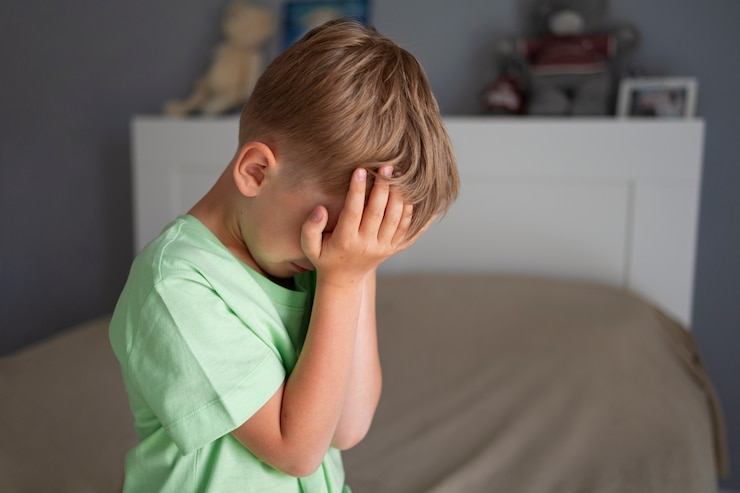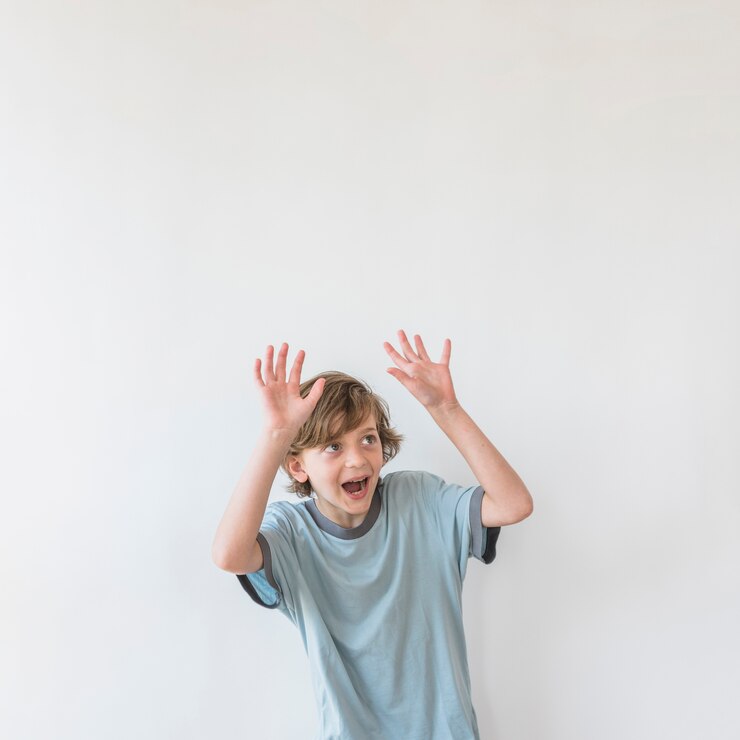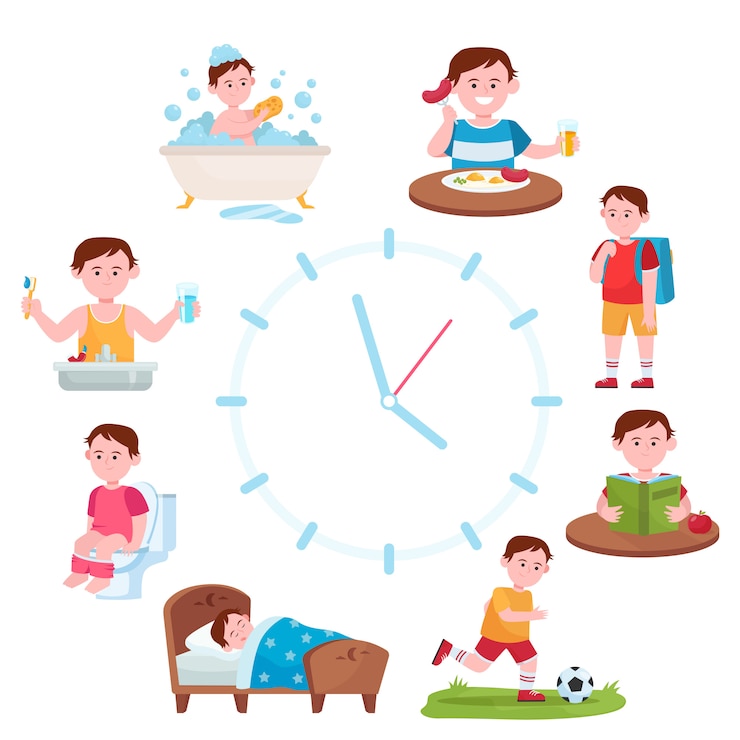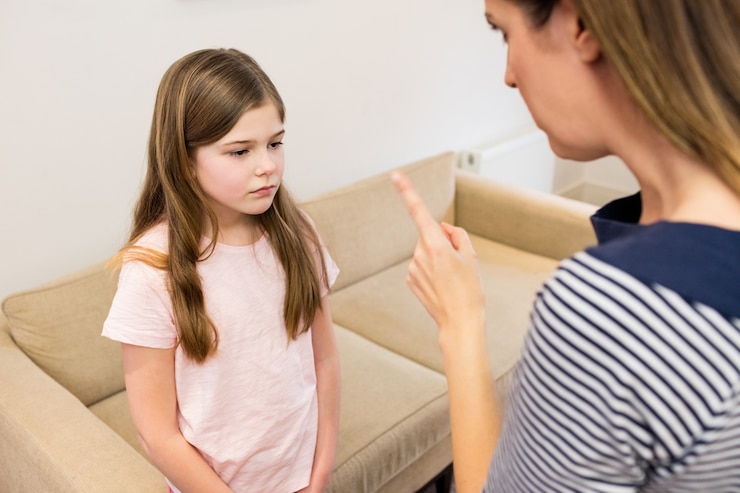
Children can start showing signs of anxiety at a young age. Sometimes these signs are clear, but other times they are more subtle or unexpected. Here are 10 signs of anxiety in kids that might not be easy to spot.
—
## Table of Contents
### “Could my child really have anxiety???”
This is the reaction most parents have when they find themselves in my therapy office, seeking clarity about their child’s confusing and difficult behaviors. Often, they’ve tried to address these behaviors using rewards, consequences, and sticker charts, but the issues tend to persist or even worsen.
It’s completely understandable why parents might miss the signs of anxiety in children. We often picture an anxious child as visibly distressed, like a preschooler clinging to a parent’s leg on their first day of school. But anxiety can look quite different.
Parents are often surprised when I explain how their child’s so-called ‘misbehaviors’ are actually signs of distress. This happens because when kids are stressed, their nervous system reacts in ways similar to being in danger, often appearing as defiance or lack of listening.
Anxiety occurs when our brain perceives a threat, triggering our body’s fight-or-flight response. Our emotional center, the amygdala, overreacts, especially if influenced by factors like genetics, environment, or health. When this system is overactive, it can’t tell real danger from imagined threats, leading to behaviors rooted in survival instincts.
Here are 10 anxiety symptoms in children that often puzzle parents but are actually linked to the fight-flight-freeze response, all backed by science.
The most common symptom that surprises parents is emotional reactivity. When living in a constant state of anxiety, we become more emotionally sensitive. In children, an overactive emotional center makes them more prone to irritability and reactive behaviors.
**Related Read: [Anger Management for Kids: A Therapist’s No Fail Guide to Calm]**
Another common symptom is excessive questioning. During a road trip, all kids ask questions, but an anxious child might ask the same question 25 times. This stems from their discomfort with uncertainty and their need to gain reassurance.
Anxiety can also manifest as excessive reassurance-seeking, as seen with questions like, “Will I make friends at soccer?” or “Do you still think I’m a good kid?” This need for validation is typical of generalized anxiety and conditions like OCD, where compulsive behaviors try to alleviate discomfort from recurring anxious thoughts.
**Related Resource: [75 Calm Down Strategies for Kids]**
Physically, anxiety can cause symptoms like stomach aches, a result of the body’s attempt to conserve energy and redirect blood flow during stress. This can be why many kids complain of stomach issues when anxious.
**Related: [5 Ways to Lower Your Child’s Anxiety Today]**
Avoidance is another common anxiety response. Just like adults might avoid uncomfortable tasks, anxious children might refuse to do things, appearing defiant. Phrases like “I’m not doing that!” or “You can’t make me!” are ways anxious children try to regain control.
When the day’s hustle ends, anxious thoughts often linger, making it hard for kids to relax and sleep. A hyper-aware brain might keep them awake or disturb their sleep with frequent wake-ups due to noises or dreams.
Children in a chronic state of stress have a constantly active emotional center, which affects their ability to concentrate, control impulses, and stay organized. This is why anxiety often coexists with difficulties in executive functions like focus and time management.
Emotions can overflow unexpectedly, such as tears at bedtime or during morning routines. Children may react strongly to minor setbacks or transitions due to their brain’s heightened emotional state.
Behaviors like hiding or running away are instinctive ‘flight’ responses. A child feeling overwhelmed may physically try to escape situations as a survival tactic.
**Related: [100 Everyday Ways to Strengthen Your Child’s Mental Health]**
Sticking close to a caregiver offers temporary comfort for anxious kids. The idea of being independent at school might feel uncomfortable and overwhelming, triggering anxiety and making it difficult to articulate their fears.
It’s easy to see children’s behaviors as intentional, but many are actually anxiety symptoms. Understanding the underlying neurological responses helps differentiate typical childhood behaviors from those requiring attention and treatment.
Every child will show some of these behaviors at times, but when anxiety consistently impacts a child’s daily life across various settings, it may be a sign of a treatable condition. Rest assured, anxiety is common and can be effectively managed with the right support and interventions.
As Karen Young from Hey Sigmund beautifully puts it, “Anxiety is the work of a strong, healthy brain that’s a little overprotective.”
For more resources, consider Karen’s book ‘Hey Warrior,’ which helps kids understand and manage anxiety.
—
*This post was first published on October 18, 2018, and has since been updated.*
—
**Sign up and join 30,000 other parents in receiving the Parents with Confidence weekly email. Get a FREE 5-day parenting course where you’ll learn:**
– How to protect your child’s self-esteem
– How to gain your child’s cooperation effectively
– The most valuable skill for your child’s future
– How to guide your child without causing emotional harm
*No spam, unsubscribe anytime. Built with Kit.*



